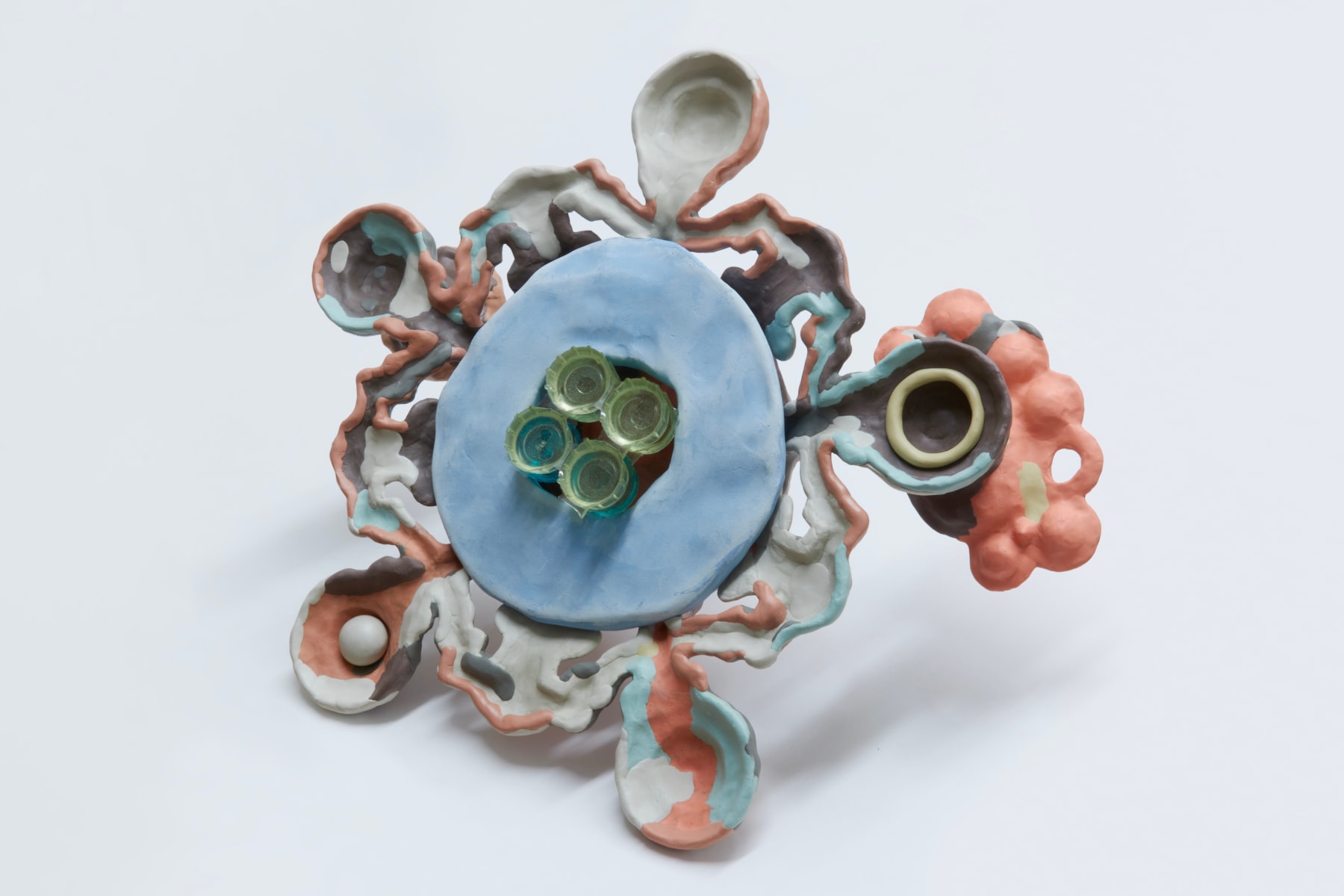Yi Xin Tong
Observatory, 2024
blue clay bisqueware, cast bronze, dust, epoxy clay, plastic, pigment and resin
19 x 12 x 15 in
48.3 x 30.5 x 38.1 cm
48.3 x 30.5 x 38.1 cm
Copyright The Artist
Yi Xin Tong (b. 1988, Lushan, China) is currently a New York-based artist, musician, and amateur fisherman. Yi Xin Tong creates object, video, installation, poetry, and sound to understand himself,...
Yi Xin Tong (b. 1988, Lushan, China) is currently a New York-based artist, musician, and amateur fisherman.
Yi Xin Tong creates object, video, installation, poetry, and sound to understand himself, to study human culture's dynamic relationship with nature, and through playful and seemingly fortuitous ways to instigate noise to societal beliefs in value, decency, and rationality. Tong uses his practice to create poetic and seemingly innocuous work to allude to the contradictions in life and to express dissent.
Observatory (2024) is a compound eye, an instrument for seeing. Concealing an ornate antique object permanently inside, the making of the object is a process of burial and preservation, while compositionally playing with circular motif, color relationship, structural balance, and asymmetry. The compound eye, an instrument for seeing, serves as a metaphor for the human experience of observing and contemplating existence. The inclusion of an ornate antique object concealed within the sculpture evokes the idea of preservation and the passage of time. The circular motif and asymmetry in the composition further emphasize the cyclical nature of life and the inevitability of decay. In this way, Observatory prompts viewers to reflect on their own mortality and the impermanence of human existence.
Yi Xin Tong creates object, video, installation, poetry, and sound to understand himself, to study human culture's dynamic relationship with nature, and through playful and seemingly fortuitous ways to instigate noise to societal beliefs in value, decency, and rationality. Tong uses his practice to create poetic and seemingly innocuous work to allude to the contradictions in life and to express dissent.
Observatory (2024) is a compound eye, an instrument for seeing. Concealing an ornate antique object permanently inside, the making of the object is a process of burial and preservation, while compositionally playing with circular motif, color relationship, structural balance, and asymmetry. The compound eye, an instrument for seeing, serves as a metaphor for the human experience of observing and contemplating existence. The inclusion of an ornate antique object concealed within the sculpture evokes the idea of preservation and the passage of time. The circular motif and asymmetry in the composition further emphasize the cyclical nature of life and the inevitability of decay. In this way, Observatory prompts viewers to reflect on their own mortality and the impermanence of human existence.



